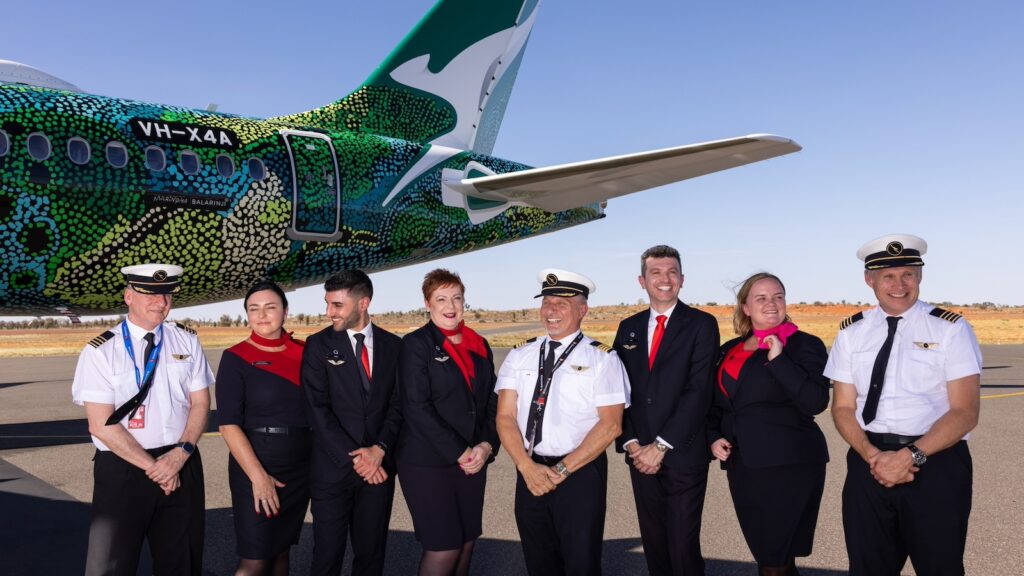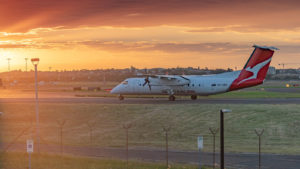The A220 aircraft heralds a new dawn for QantasLink. Qantas’s full-service subsidiary is replacing its current Boeing 717 fleet with a 29-strong next-gen A220 fleet. These aircraft will not only open new Domestic and International routes for QantasLink but also burn less fuel and generate less emissions than the previous fleet. And, of course, there will be greater passenger comfort.
I was lucky to be invited on the QantasLink A220 Preview flight from Sydney to Ayers Rock. The first A220 aircraft delivered to Qantas Group adorning the latest Flying Art Series livery created by Pitjantjatjara artist Maringka Baker. And what a stunning livery it is!
The A220, a new era for QantasLink
The QantasLink A220 will seat 137 passengers and feature 10 Business seats in a 2-2 configuration and 127 Economy seats in a 2-3 configuration. Each aircraft will be equipped with fast and free Wi-Fi, allowing passengers to stream both the internet and watch wireless entertainment on their own personal devices.
Business Class
The Business cabin is generally the first thing passengers see as they enter the aircraft, and in this regard, the A220 Business cabin doesn’t disappoint. Sporting the signature Burgandy colour, the seats are identical to those found on 737 aircraft. These seats include a 37-inch seat pitch with a 5-inch recline.
They also come with the following features:
- Wireless charging pad
- 6-way adjustable headrest, calf rest and footrest
- Dual USB A & C charging ports
- Bottle holder
- In arm tray table with built-in tablet holder
- Extendable cocktail table
- Leather covers
The seats are a pleasure to sit in, as they are extremely comfortable and seem more plush and spacious than those found on the 737. However, my mind may have been playing tricks on me, given the newness of the seat and the fact that the same-sized seat is installed in a smaller plane.
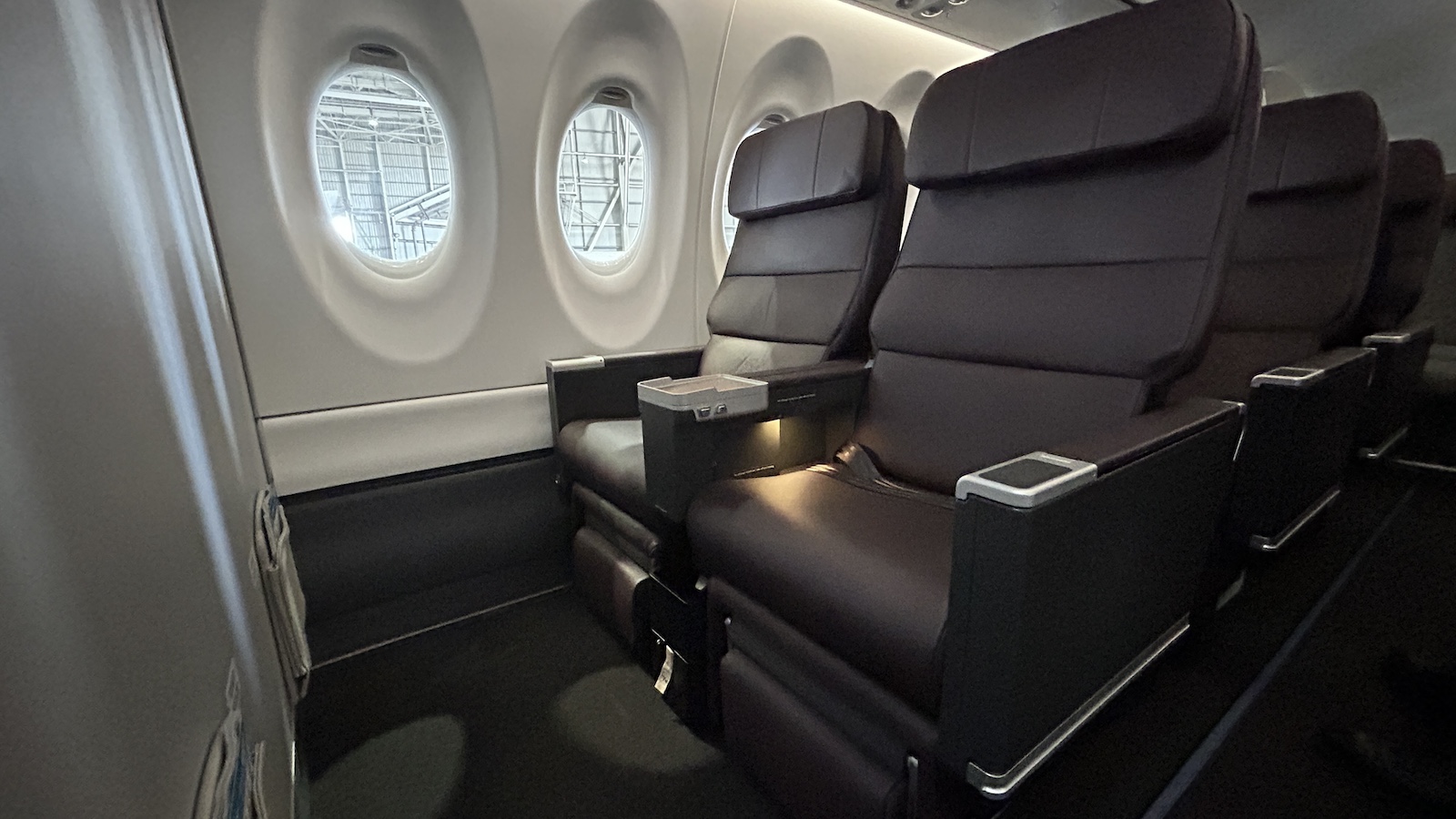
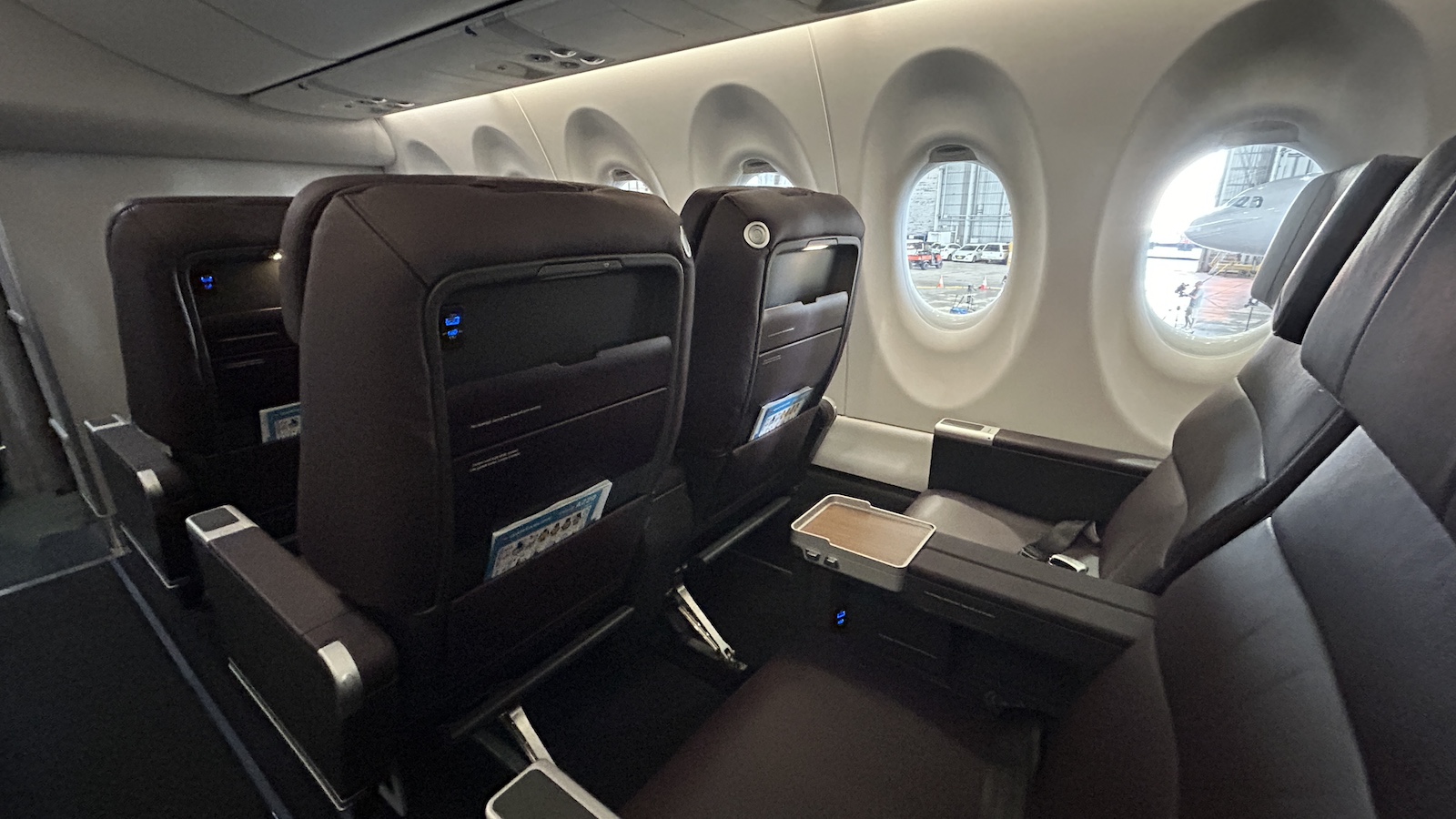
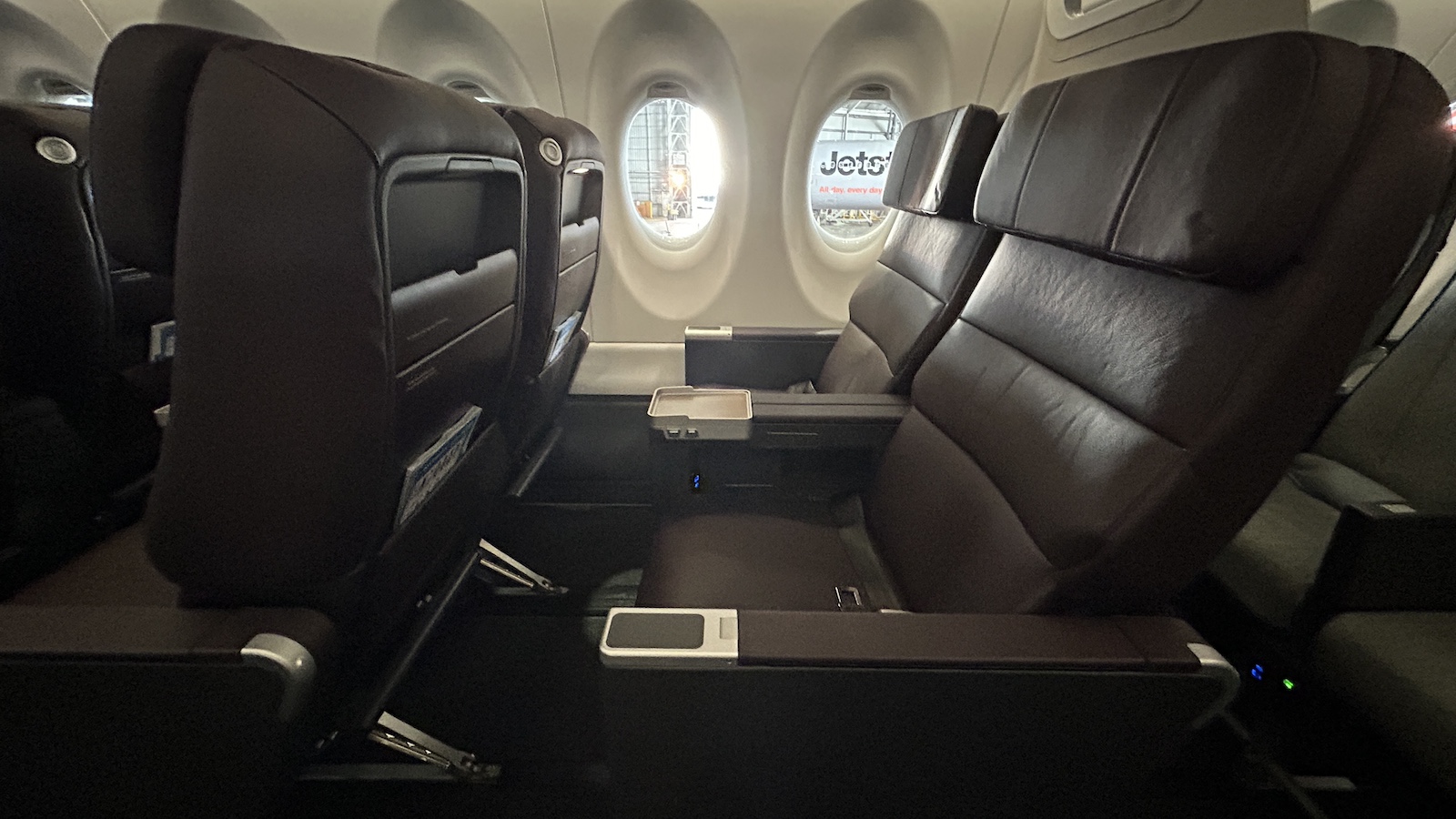
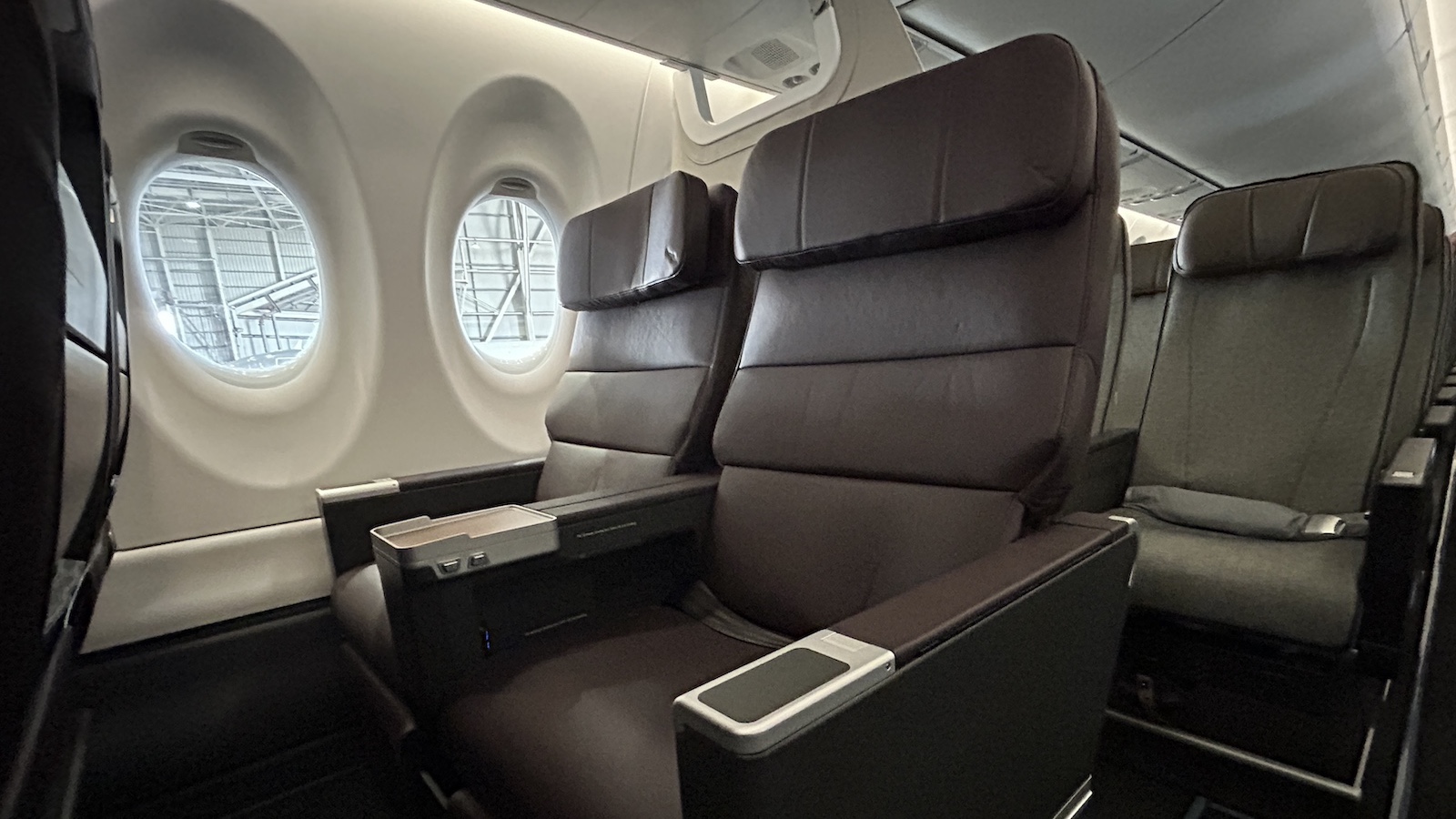
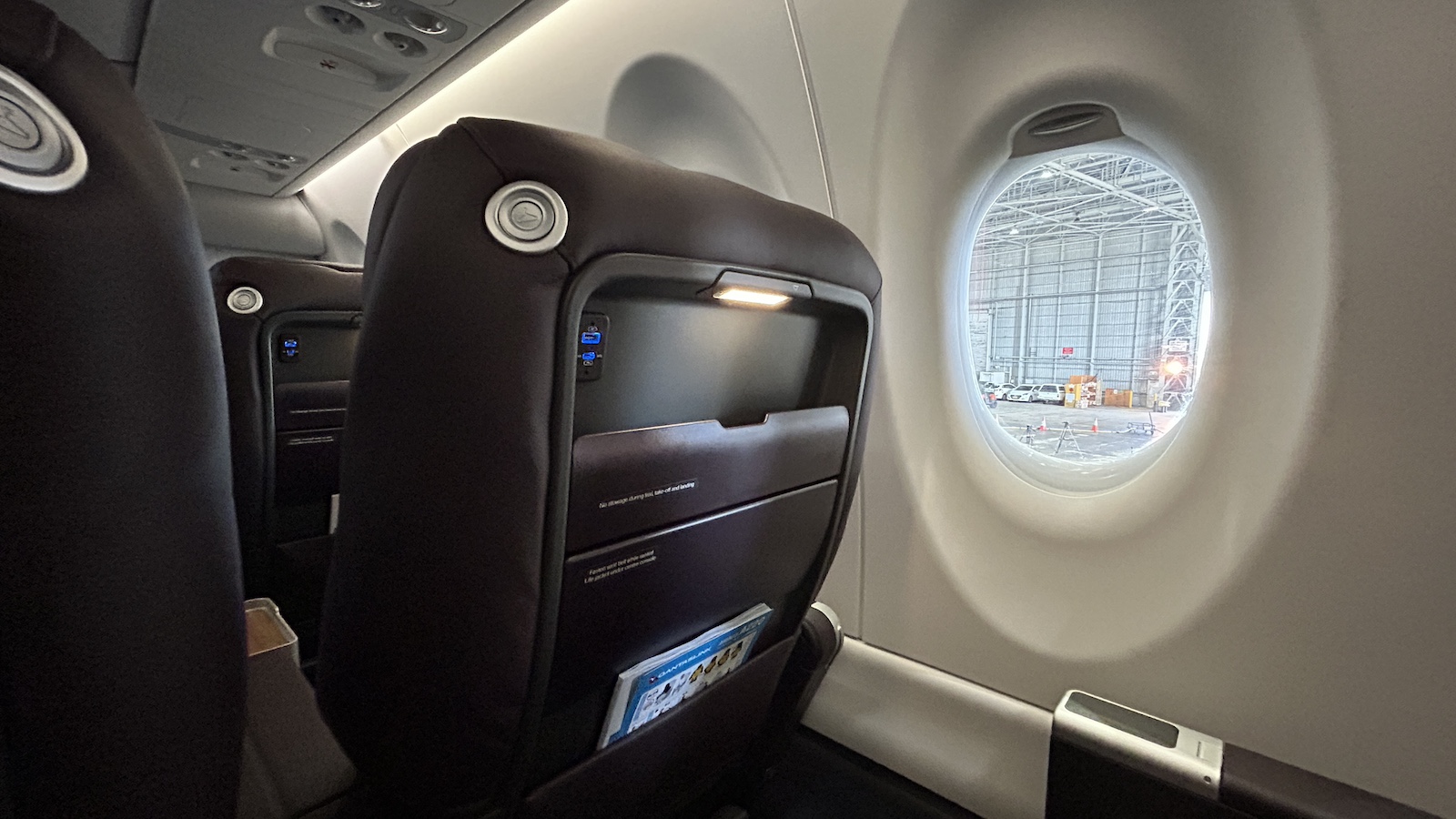
Economy Class
I always marvel at the technological advancements in Economy seat design, both in terms of comfort and space optimisation. The A220 excels in both. Gone are the days of rock-hard Economy seats. My 3+ hours spent sitting in these did not illicit any back tightness or the need to constantly squirm around in my seat. Although the 30-inch seat pitch is relatively standard for a Domestic Economy cabin, the seat’s modern design made it feel a few inches larger. And definitely larger than its predecessor, the Boeing 717.
These Economy seats come with the following features:
- 30-inch seat pitch, with 18-inch seat width
- Customised woven fabric covers with piping
- Extra seat cushioning for greater comfort
- Leather 6-way adjustable headrest
- Dual USB A&C charging ports
- Drop-down tablet holder with anti-slip mat
- Adjustable meal table
For most of us, this is the cabin we will be enjoying, and passengers will see a vast improvement to the current 717 aircraft.
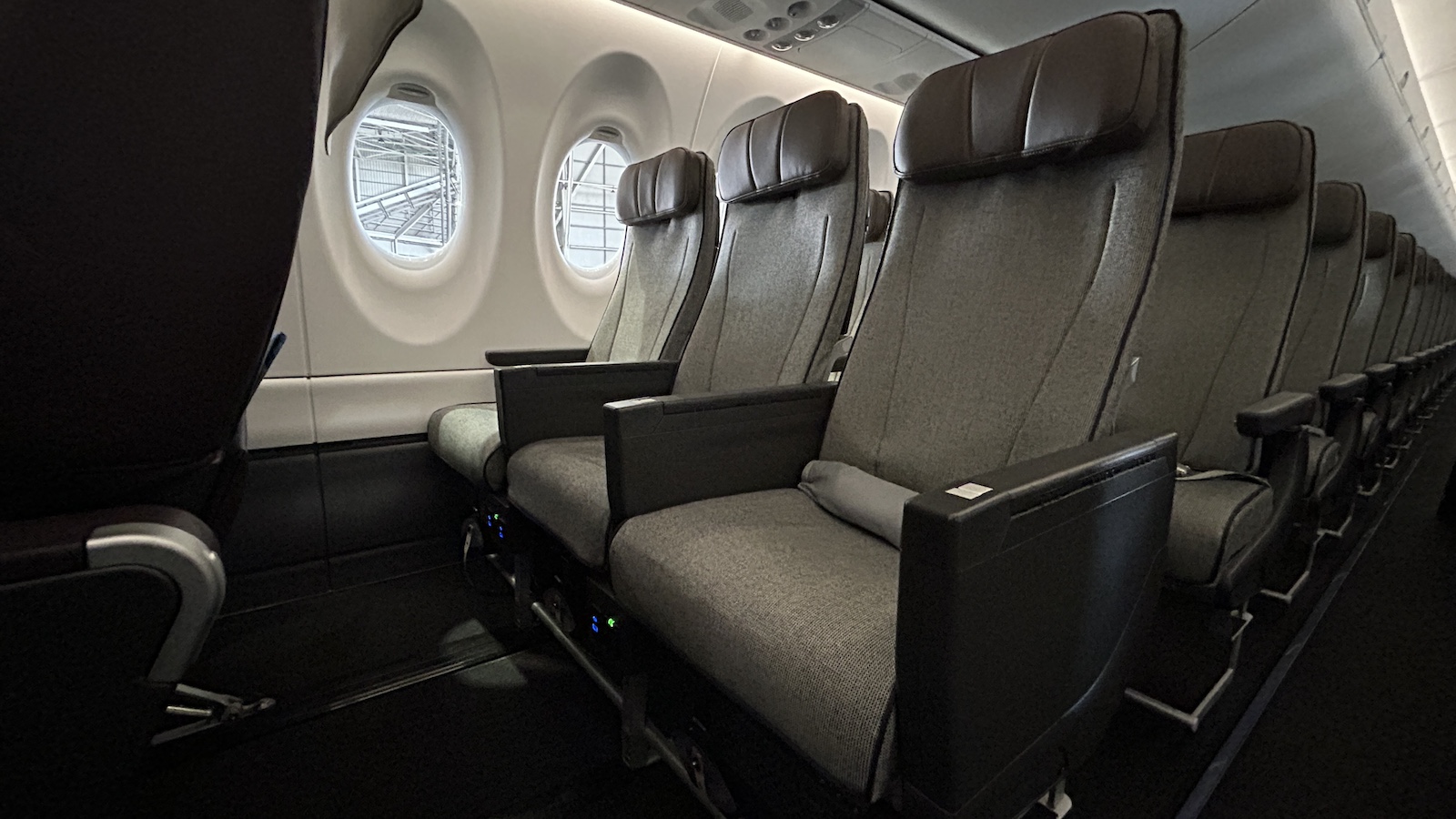
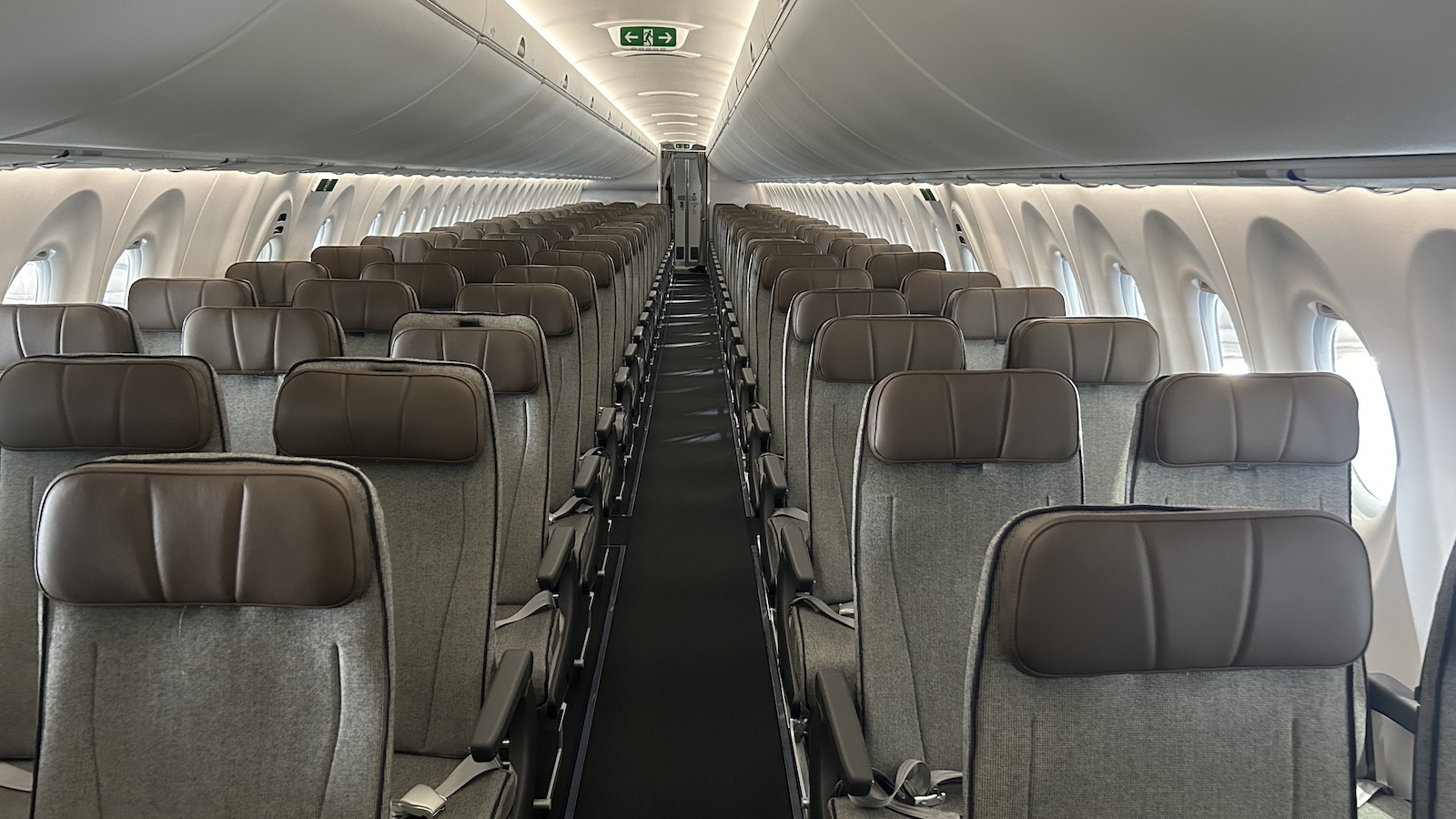

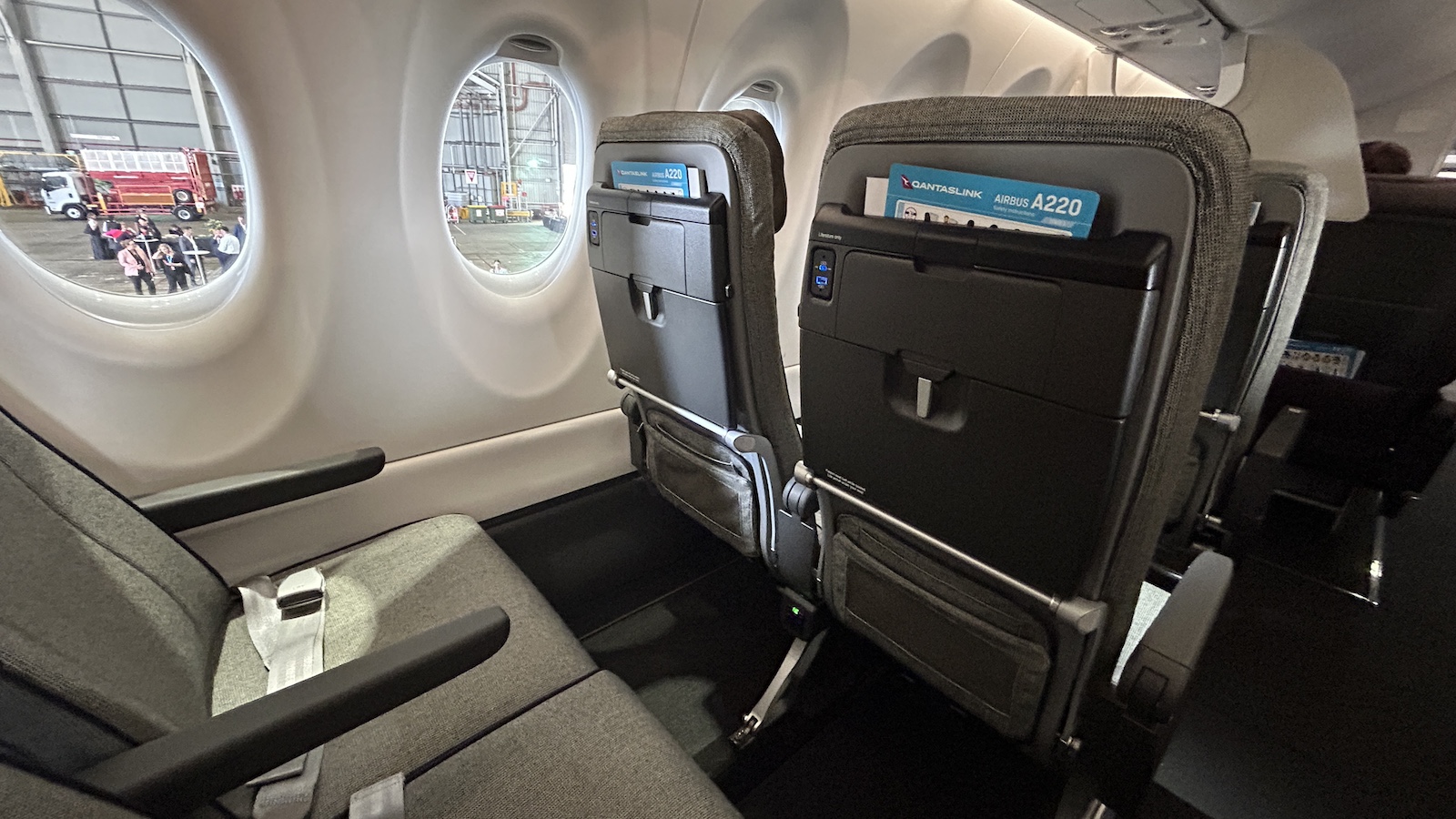
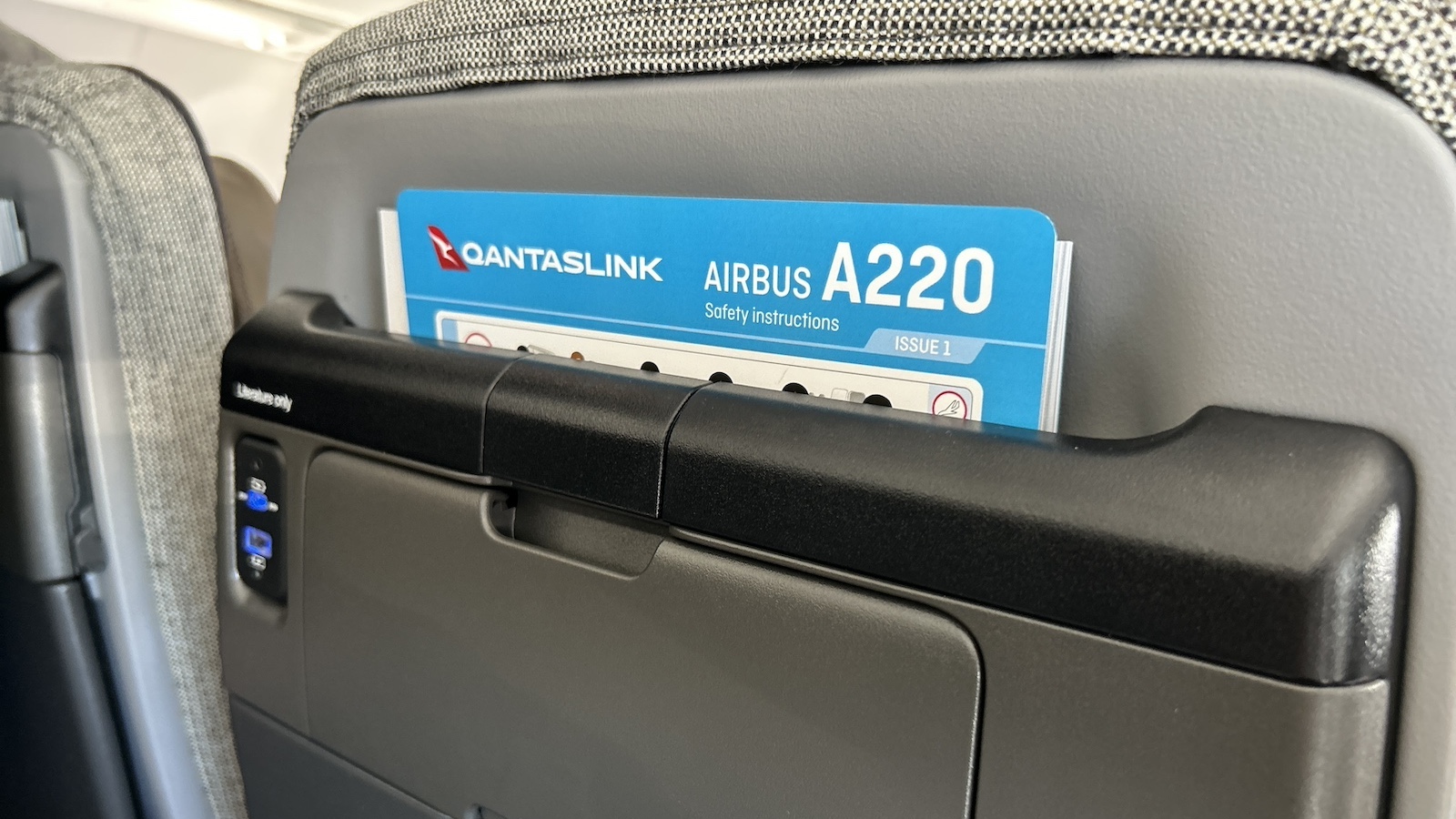
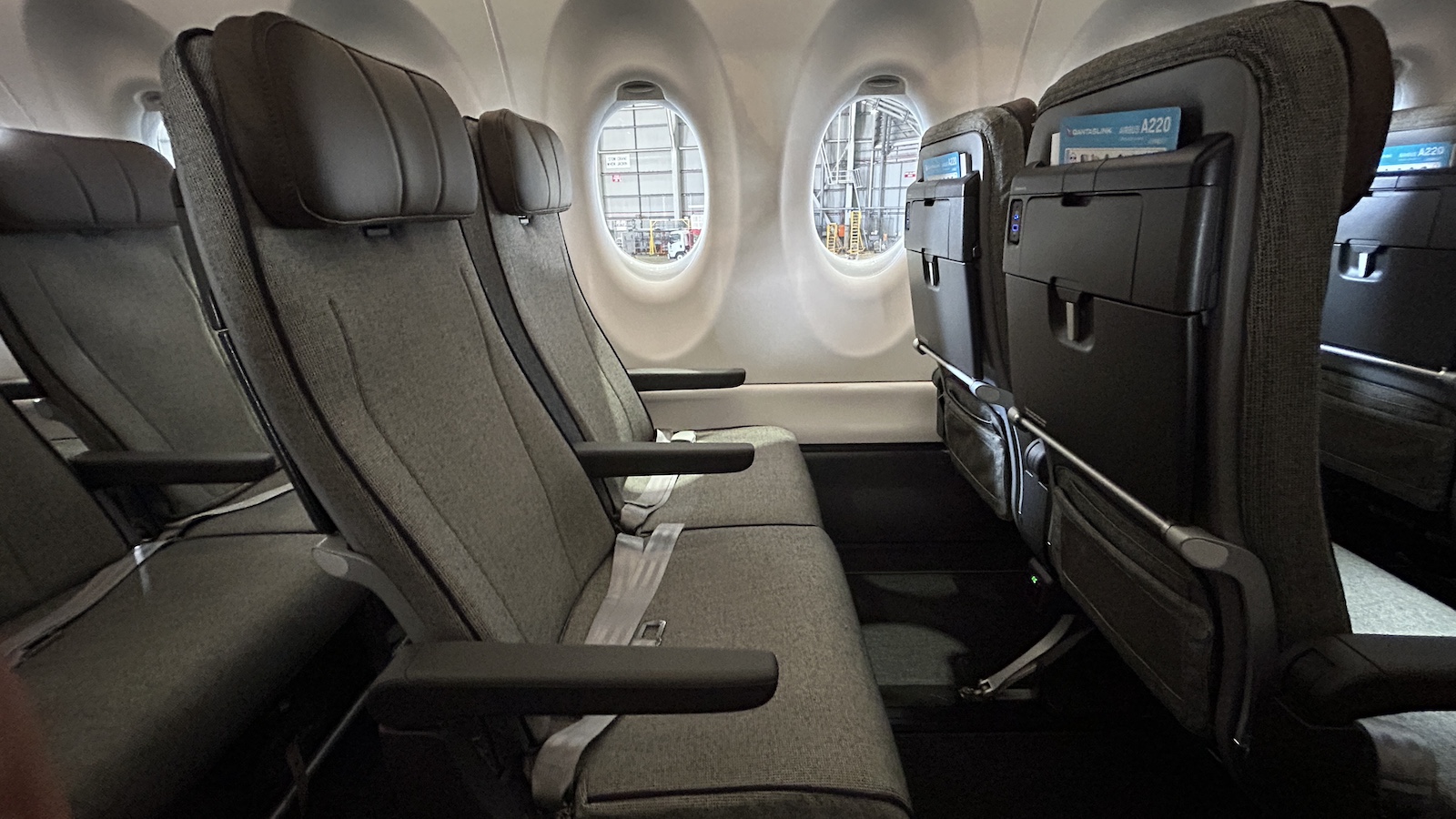
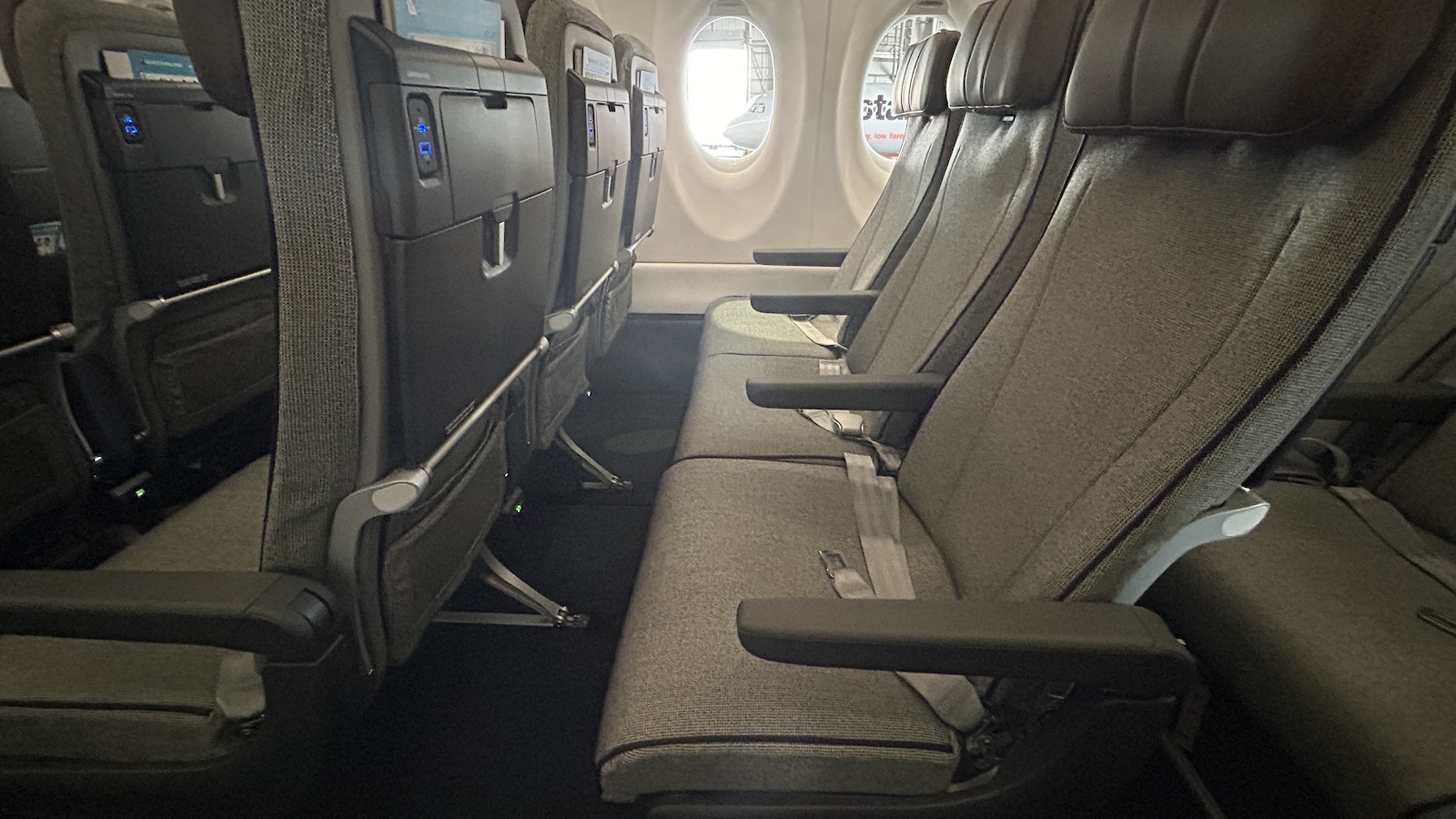
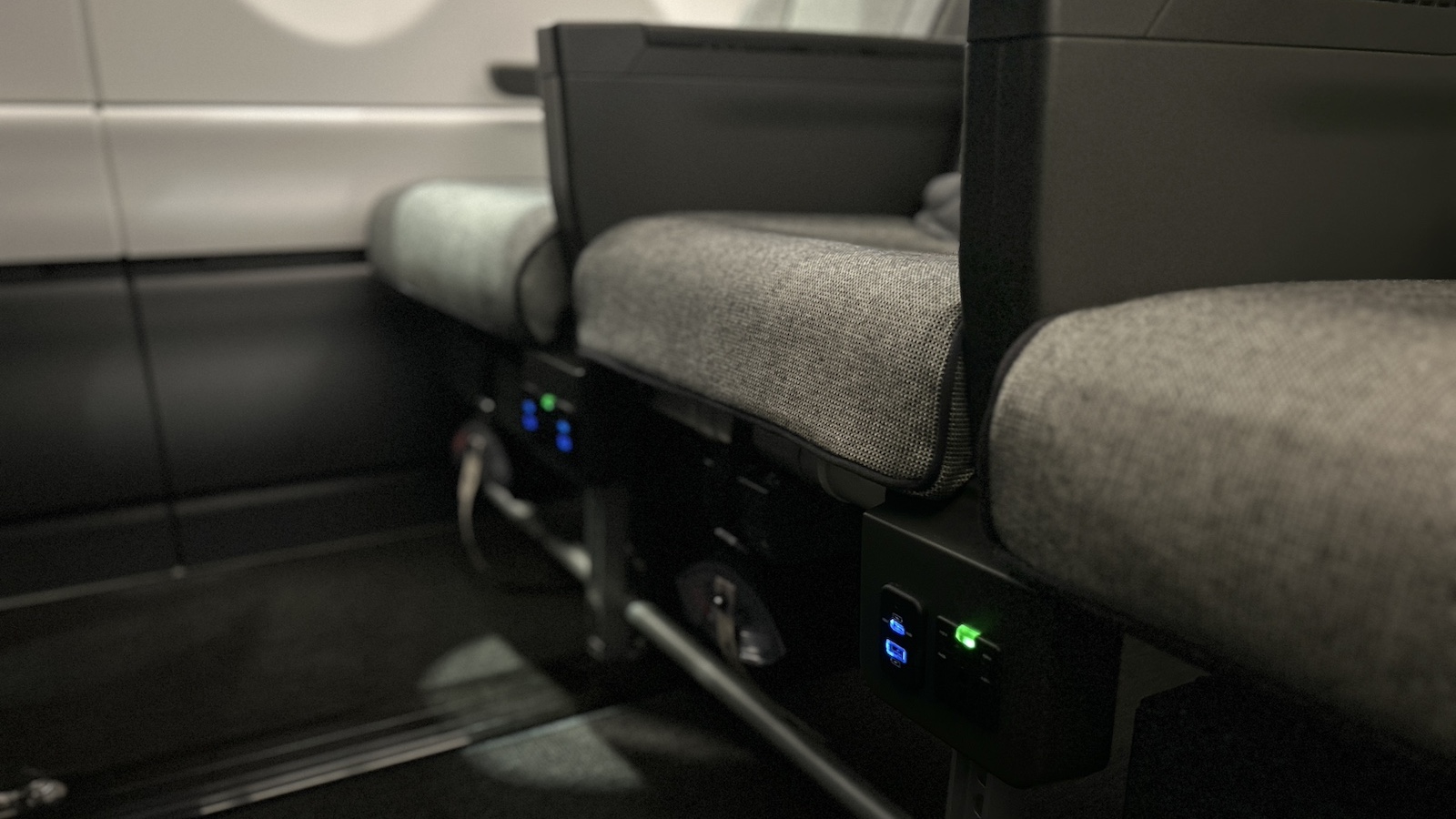
Special livery A220
The introduction of the A220 is a milestone vent for the Qantas Group. And what a way to celebrate its entry than to paint the first QantasLink A220 in a special Qantas Flying Art Series livery?
The first A220 is named Minyma Kutjara Tjukurpa and the livery is designed by leading Indigenous Australian design agency Balarinji. The livery was designed in collaboration with Maringka Baker and her family, Tjungu Palya Arts Centre, Copyright Agency, Qantas and Airbus.
Maringka Baker is one of Australia’s most accomplished artists. She was born in 1952 in the remote community of Kanpi in far northwest South Australia but now lives in Docker River in the Northern Territory. She teaches and mentors new generations of First Nations artists from her family and community.
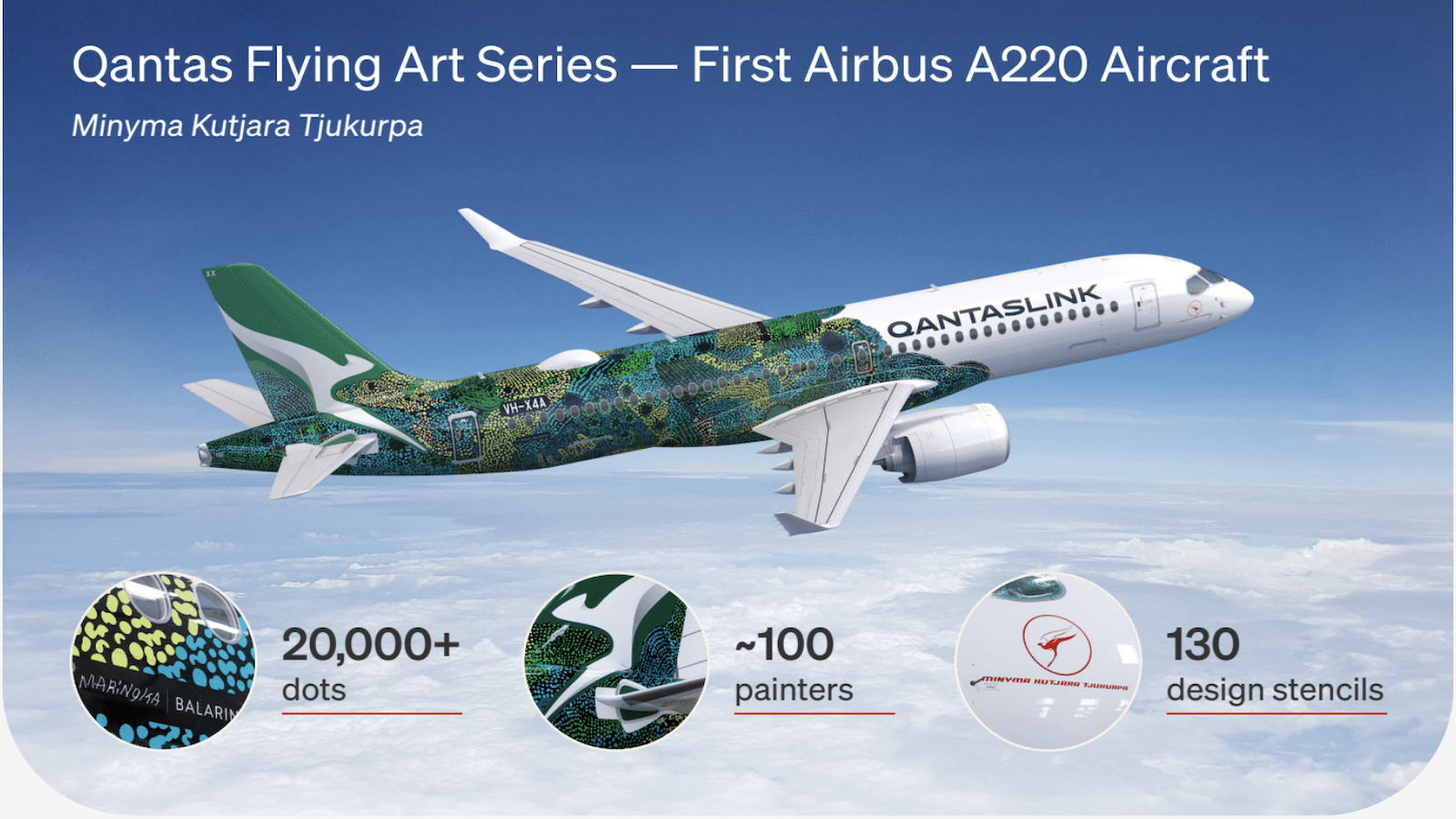

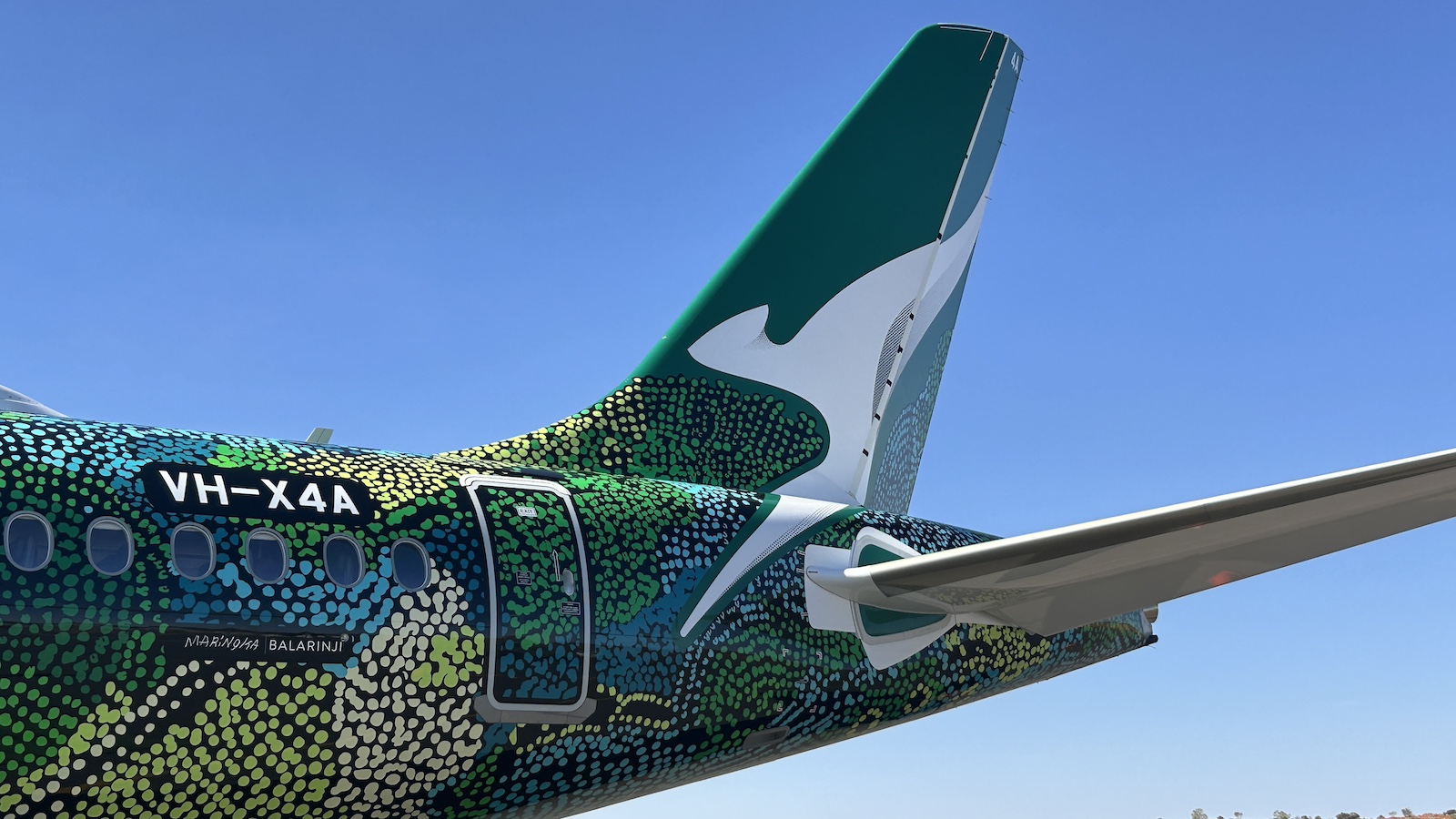
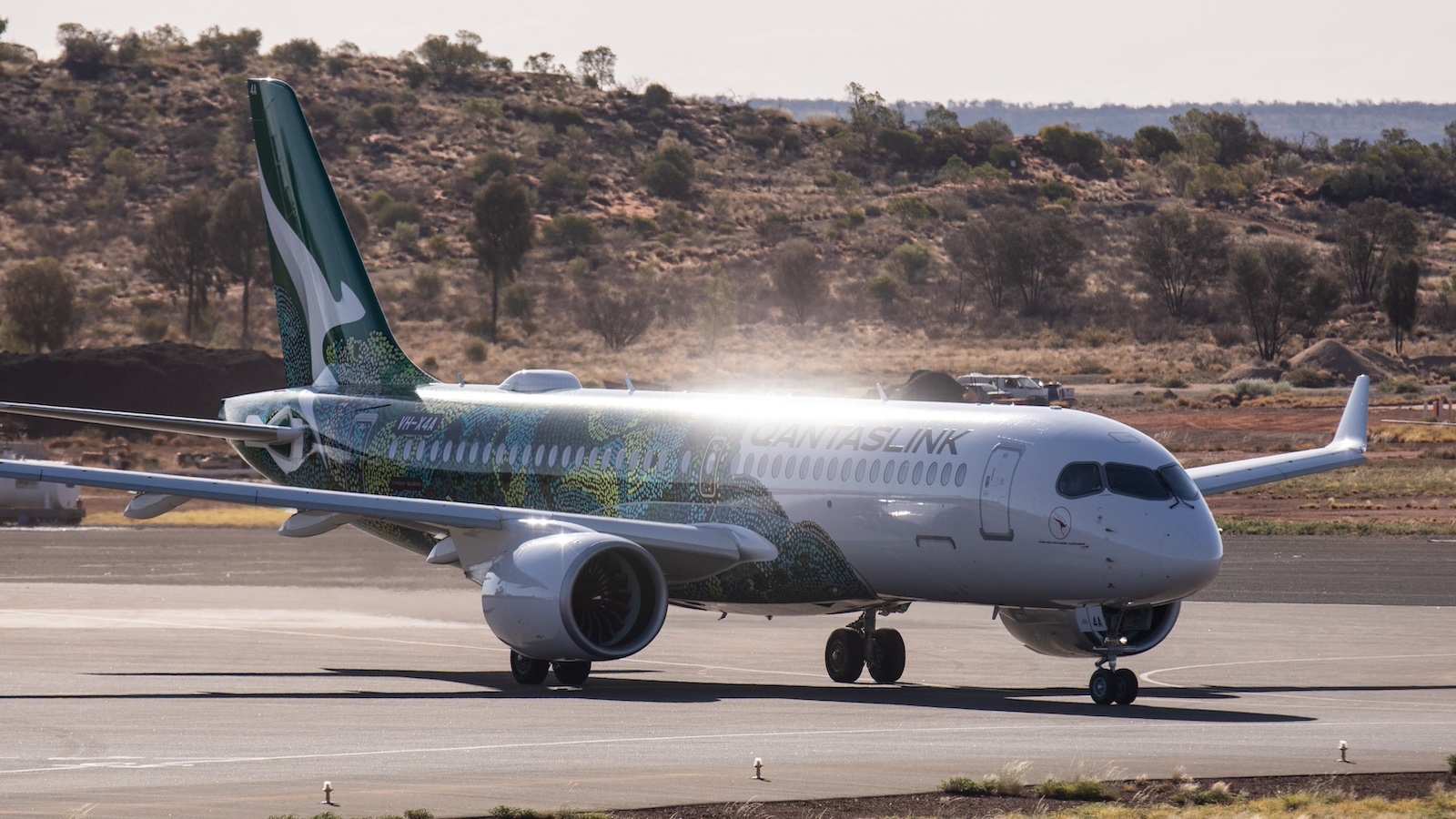


Board the A220 for Ayers Rock (Uluru)
There it is. Minyma Kutjara Tjukurpa. The plane sits at the gate, ready to whisk us off to the heart of the nation, Uluru. In a sea of red-tailed Boeing 737 aircraft, this new A220 really stands out, in a good way. Perhaps it is its smaller size, the contrasting green tail or just that it looks so brand-new. Whatever it is, I can’t wait to board.
Taking advantage of the aircraft’s larger size windows, I gaze out the window as I watch the landscape change from the concrete jungle of metropolitan Sydney to the lush green of the Blue Mountains and, ultimately, the bright red sands of the outback.
And we’re there…
After landing in Uluru, we make our way to our home for the night, the beautiful Sails in the Desert Resort. I wish we had more time to experience this accommodation, as it looks like a desert paradise. But we are on a tight itinerary.
We are treated to a magnificent sunset at Wintjiri Wiru as we watch Uluru slip into darkness. We are then handed a gourmet dinner hamper and settle in to witness the Mala story. This is a must-do if you go to Uluru. The Mala story is depicted through a series of choreographed drones, lasers and projections, which really come to life with the contrast of bright lights and a dark sky background. Uluru in the background is the centrepiece. The Mala story is, in fact, an artistic expression of an ancient Anangu story.
The light spectacle doesn’t end there. We briefly make the short journey to the Field of Light show. I’m not sure where else in the world you could see so many lights, let alone lights in the desert! In fact, there are 50,000 spindles of light that turn the dark night into, well, light.
The next day…
Speaking of light, we make our way to the Uluru Sunrise Experience the following morning. And what an experience it is. As the sun rises, Uluru begins to emerge from the darkened silhouette. Unfortunately, so do the flies. But nothing that a cheeky fly net can’t fix. So make sure to come prepared.
Our final activity in this whirlwind 24-hour itinerary is a guided tour following the Mala Walk along the base of Uluru. These ranger-guided tours are offered daily. What amazes me is the number of caves in Uluru. I didn’t even know that there were any caves. Tourists can enter the caves where the Mala (rufous hare-wallaby) people camped when they first arrived at Uluru.

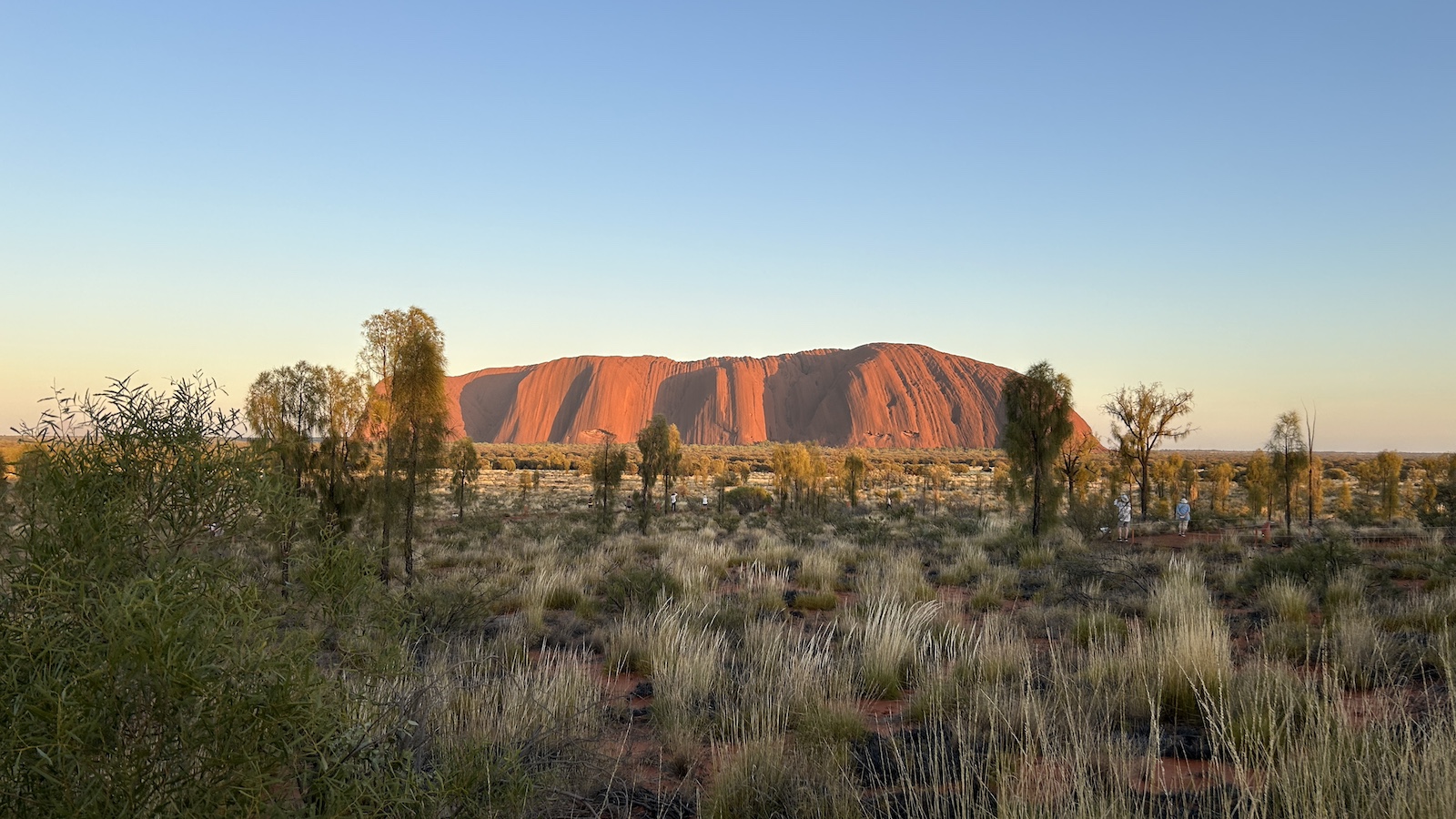

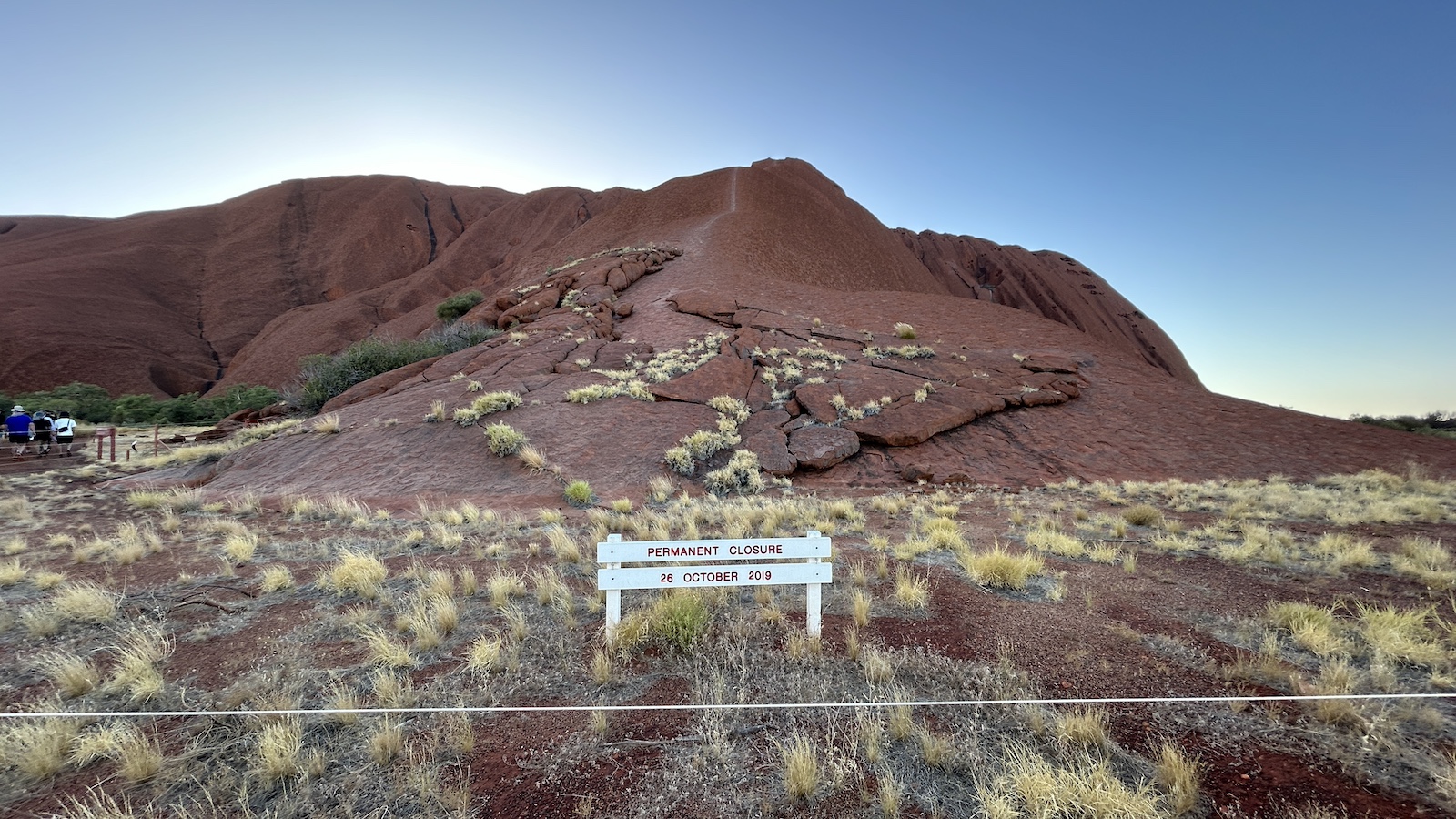
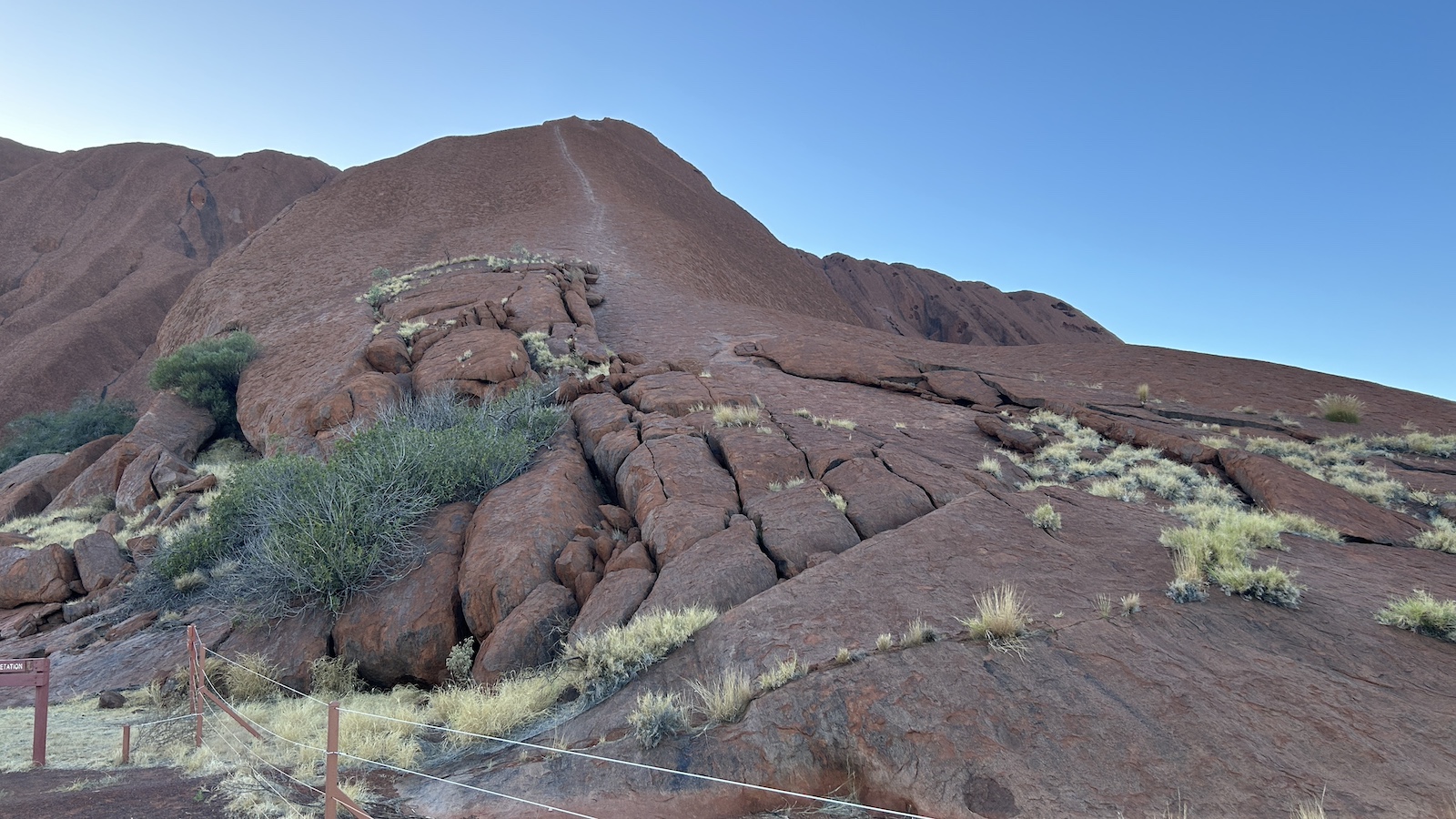
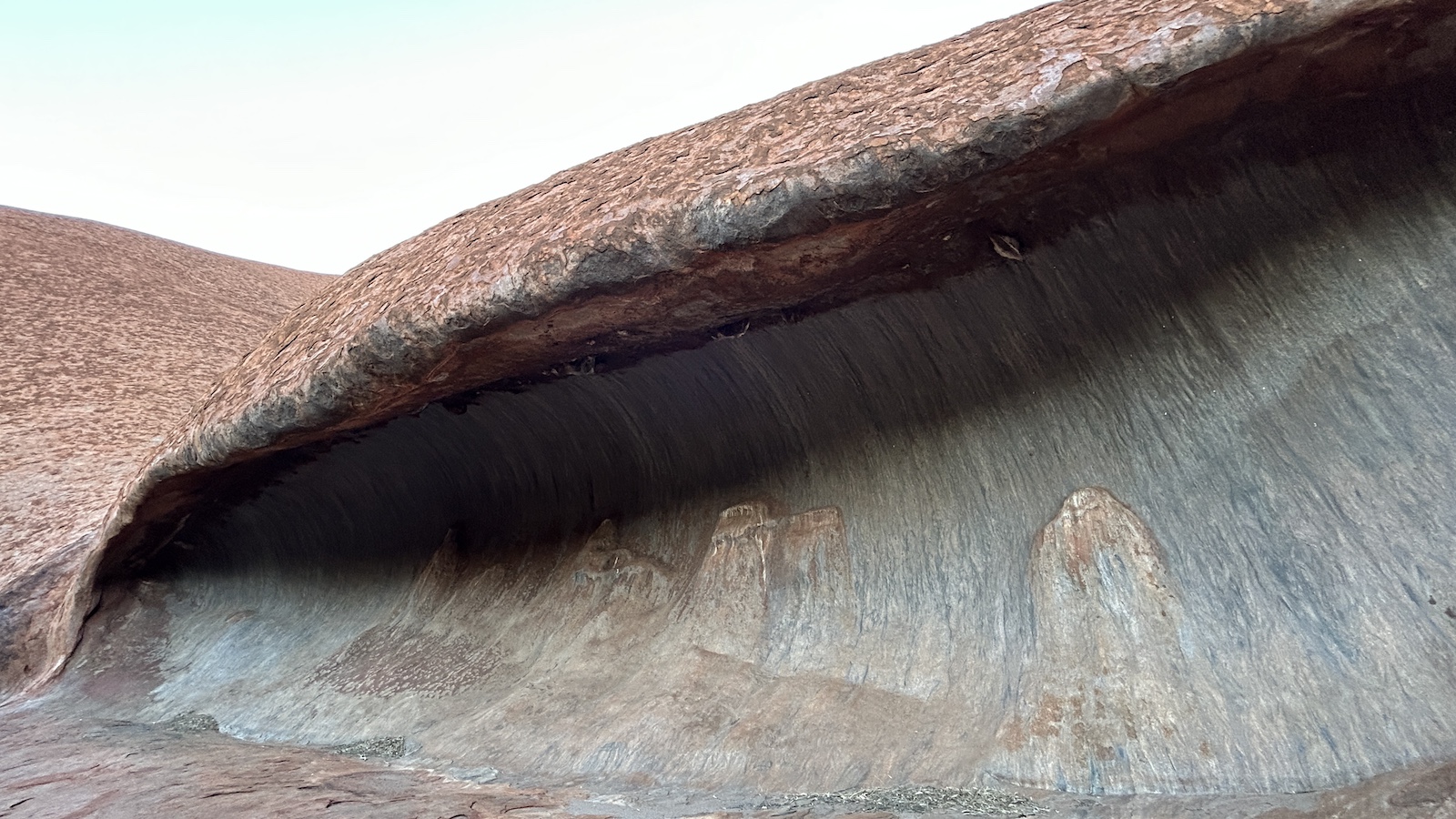
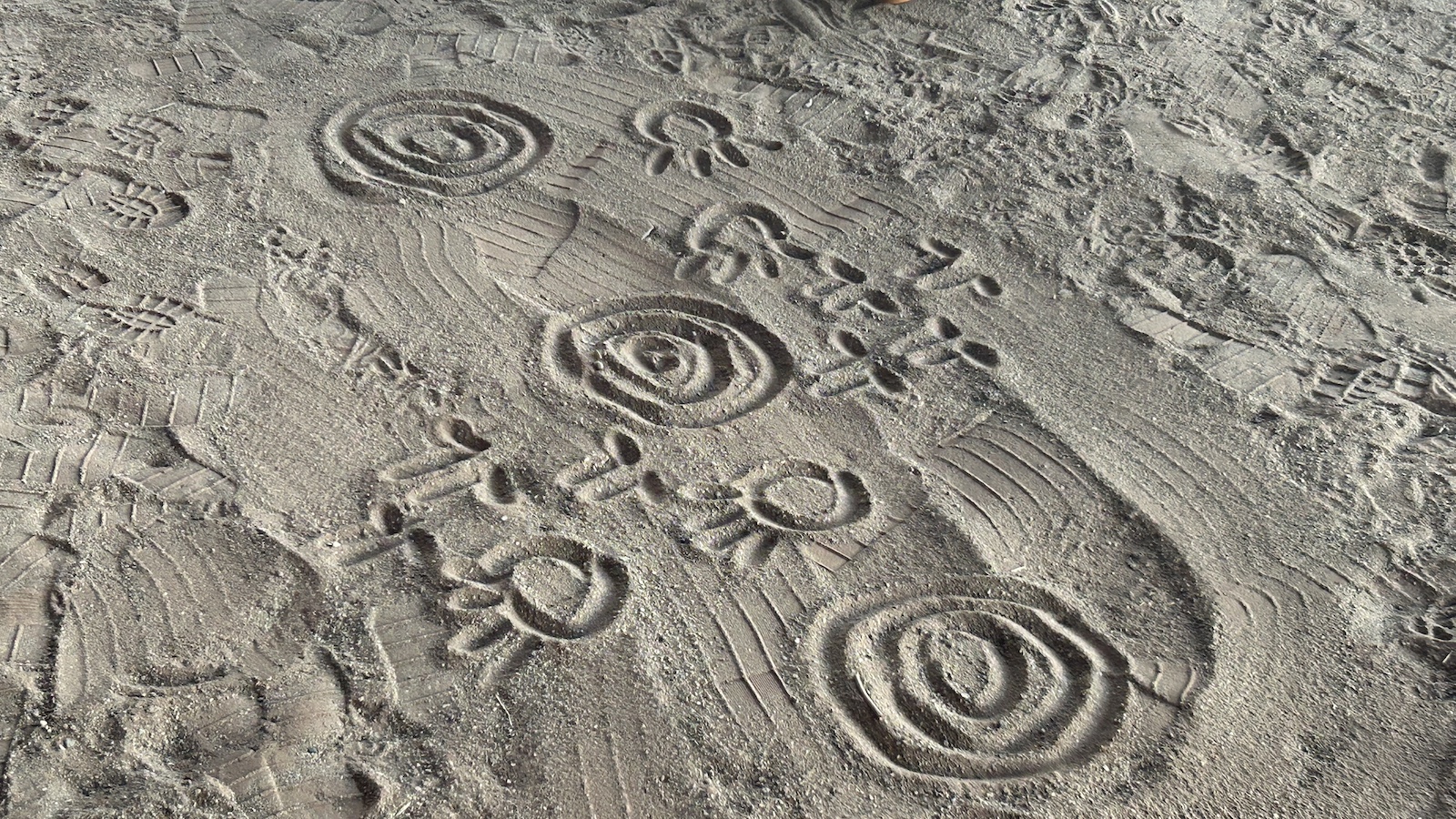


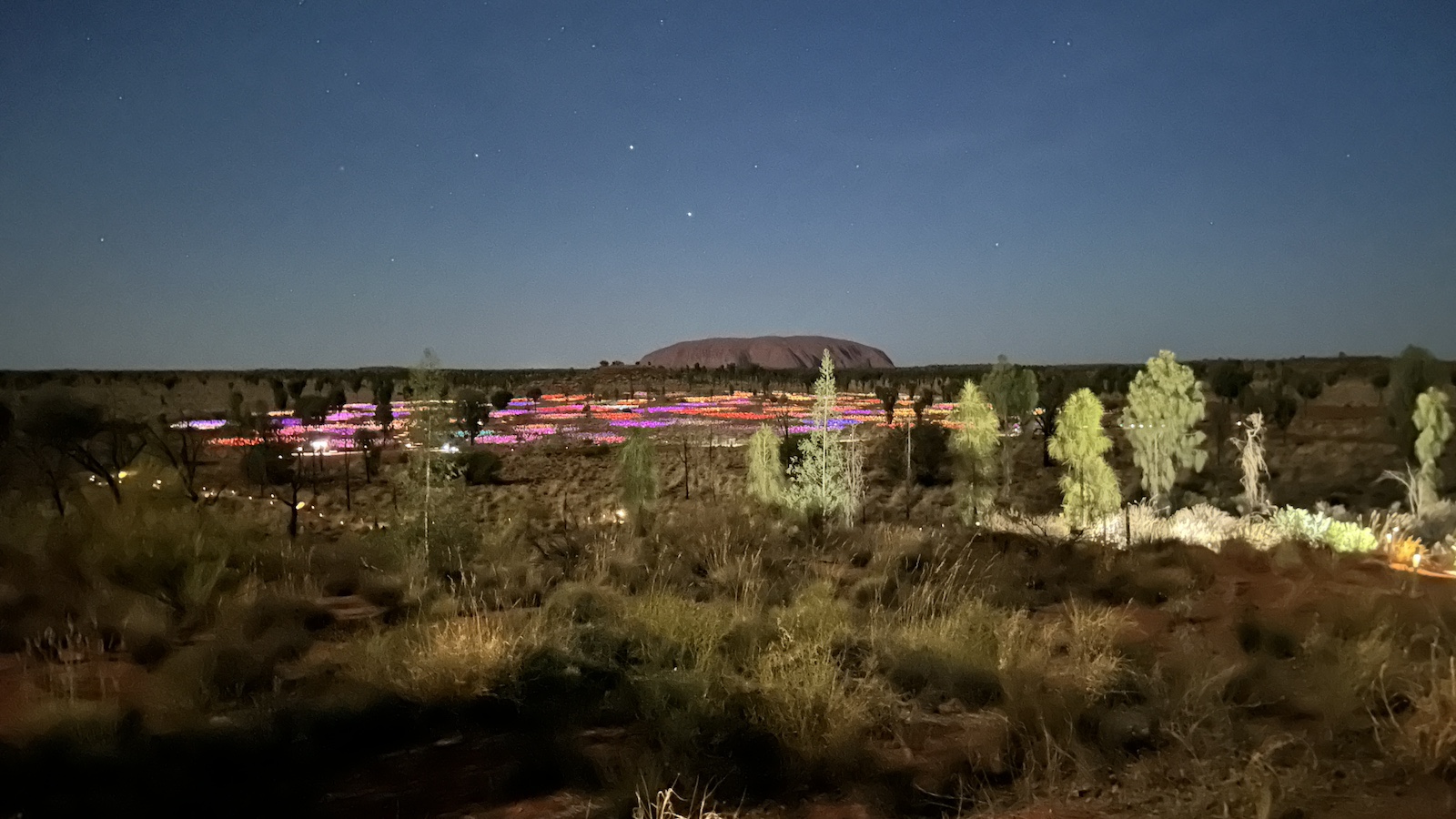
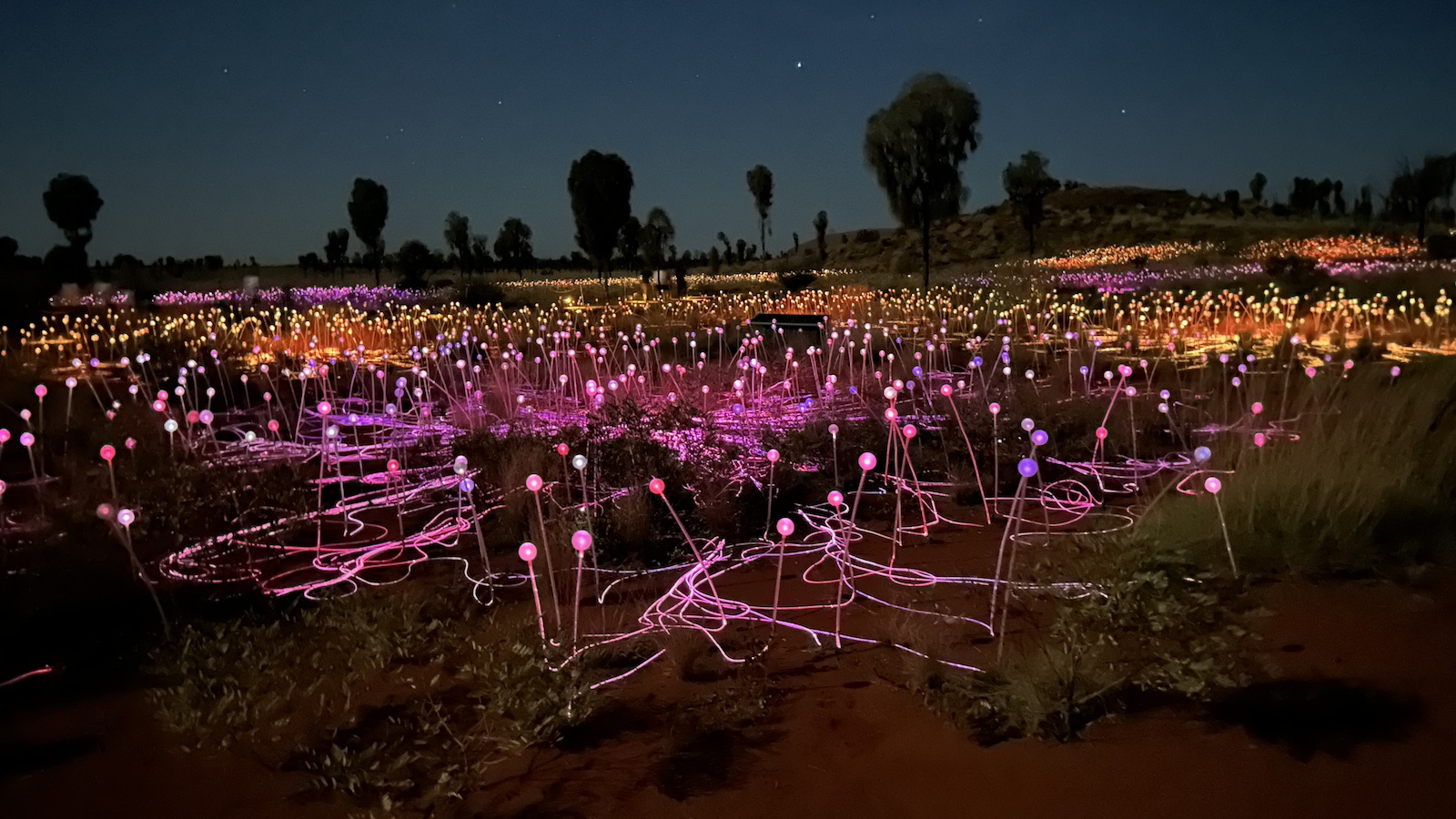
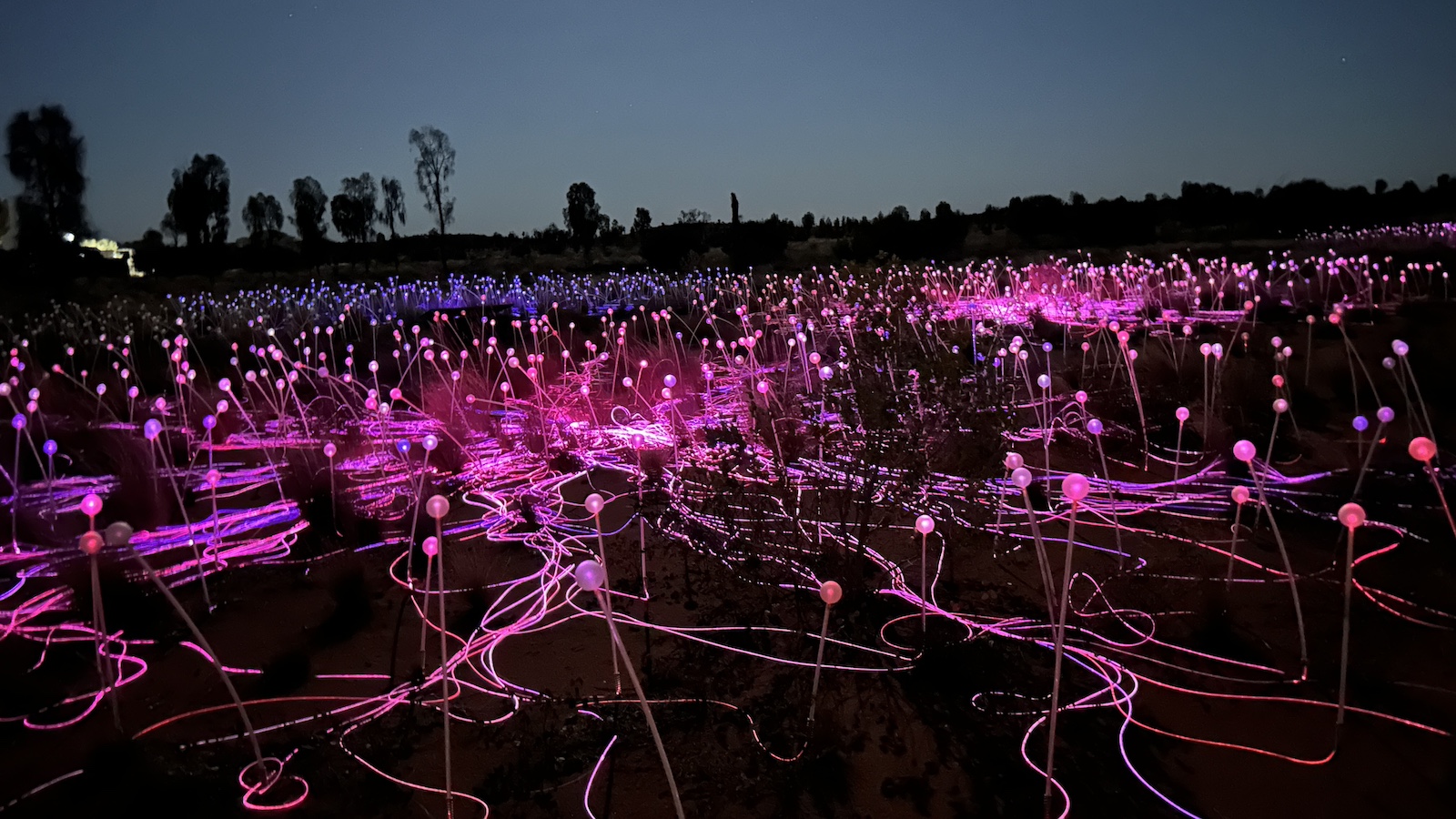
How to get to Uluru using Points
Flights to Uluru can be quite expensive when paying with cash. This is not uncommon and affects many flights to regional or rural areas where there is little competition. This is why regional flights like Sydney to Uluru can be a great way to spend points.
At the time of writing, the best sale fares that I could find were selling for $309 one-way in Economy or $1,279 in Business, but on some days can be in excess of $2,000. Use Qantas Points, and you could be travelling for just 18,000 Points in Economy or 41,500 Points in Business, plus a $75 co-payment for tax, fees and charges.
Redeeming Points, therefore, represent excellent value, especially in Business, where you can get 2.9 cents per point during a sale, which far exceeds our value of a Qantas Point of 1.90 cents. But even in Economy, where you obtain 1.3 cents per point in value, it still far exceeds most Domestic capital city route redemptions that generally generate just over half that value.
Summing up
Introducing the A220 into their fleet is yet another great milestone for the Qantas Group. The future of regional and Domestic flying through QantasLink will now be more comfortable than ever before.
And it is great to see that Qantas put a lot of thought into the special livery for its first A220 QantasLink aircraft. Adding to not just Qantas Flying Art Series and commitment to supporting First Nations, but a livery that it so synonymous with one of QantasLink’s most in-demand flight routes.
We all look forward to seeing more A220 QantasLink planes gracing our airports in the future.
Qantas American Express Ultimate
The author flew to Uluru as a guest of Qantas.

